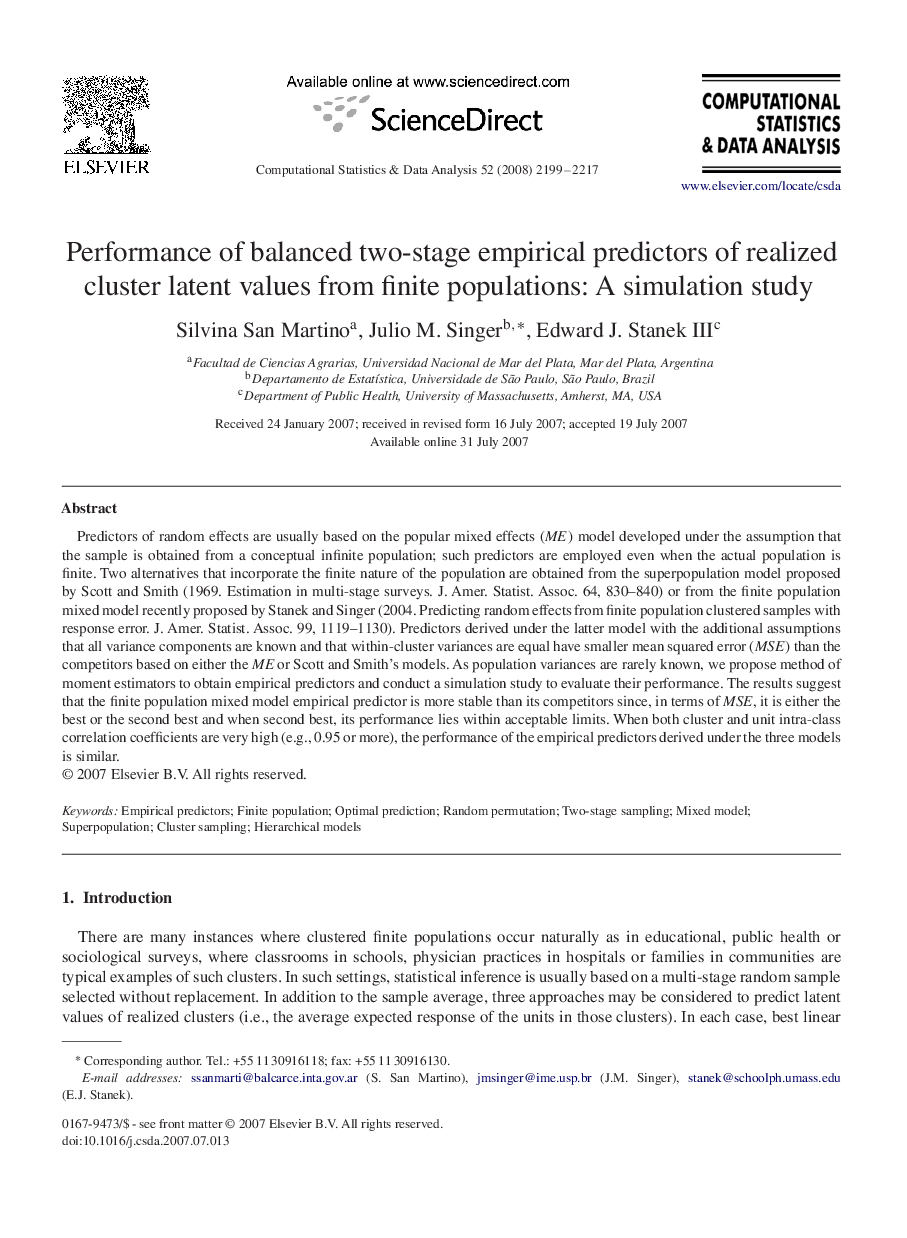| Article ID | Journal | Published Year | Pages | File Type |
|---|---|---|---|---|
| 417333 | Computational Statistics & Data Analysis | 2008 | 19 Pages |
Predictors of random effects are usually based on the popular mixed effects (ME) model developed under the assumption that the sample is obtained from a conceptual infinite population; such predictors are employed even when the actual population is finite. Two alternatives that incorporate the finite nature of the population are obtained from the superpopulation model proposed by Scott and Smith (1969. Estimation in multi-stage surveys. J. Amer. Statist. Assoc. 64, 830–840) or from the finite population mixed model recently proposed by Stanek and Singer (2004. Predicting random effects from finite population clustered samples with response error. J. Amer. Statist. Assoc. 99, 1119–1130). Predictors derived under the latter model with the additional assumptions that all variance components are known and that within-cluster variances are equal have smaller mean squared error (MSE) than the competitors based on either the ME or Scott and Smith's models. As population variances are rarely known, we propose method of moment estimators to obtain empirical predictors and conduct a simulation study to evaluate their performance. The results suggest that the finite population mixed model empirical predictor is more stable than its competitors since, in terms of MSE, it is either the best or the second best and when second best, its performance lies within acceptable limits. When both cluster and unit intra-class correlation coefficients are very high (e.g., 0.95 or more), the performance of the empirical predictors derived under the three models is similar.
